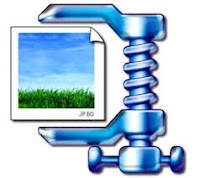
On-page optimization (AKA on-page SEO)refers to all measures that can be taken directly within the website in order to improve its position in the search rankings. Examples of this include measures to optimize the content or improve the meta description and title tags.
In the search engine optimization, on-page optimization refers to factors that have an effect on the Web site or Web page listing in a search results. These factors are controlled by you or by coding on your page. Examples of on-page optimization include actual HTML code, meta tags, keyword placement and keyword density.
Head Section Optimization
Head section optimization mainly focuses on the snippet and it includes SEO title, URL, and meta description.
Snippet can make more attractive by using the star rating is termed as rich snippet.1. Title tags
Title tag define the title of your web page or document. They’re the first part showing in a snippets of our web pages. When we are writing our title tag, it should be always short, clear and duplication is not a good practice.
Example: <head>
<title>softloom</title>
</head>
The ideal length of a title should 50-60 characters or 512 pixel. If our title tag is more than 60 characters, Google will only show the first 60 characters.Google cannot display long sentences which have more than 512 pixel width.If it exceeds 60 characters google wont be able to show the full title at the end there will be 3 dots for those words remaining in the title.
The title tag represents the whole content of your webpage. So we must care about these things,
- No spelling mistakes.
- No grammatical errors.
- Title should be in bold letters.
- The title must be clear and impressive.
- Title should be unique.
- Use capital letters only at the begging of a word.
2.URL
A URL is mainly used to point webpage, a component of a webpage or a program on a website. The resource name consists of:
- A domain name identifying a server or the web service.
- A program name or a path to the file on the server.
Meta description is a short description about the web services and focusing ares also an important one. We cannot avoid it and if we does not give meta description, The google automatically take some of the contents as meta description.
So we must have consider these factors.
- Short description.
- Limit with in 20 words.
- Unique.
For a page the meta description should be in 155 to 160, That is pixel width of 1024.
Body tags:
H1, H2, H3, H4, H5, H6 are the body tags. H1 tag is the identity part of body section. H1 tag are generally used for main heading. 8-10 words can be used in H1 tag. If the H1 is not specified, google take heading from H2 tag if H2 is not there H3.
<h1>This is heading 1</h1>
<h2>This is heading 2</h2>
<h3>This is heading 3</h3>
<h4>This is heading 4</h4>
<h5>This is heading 5</h5>
<h6>This is heading 6</h6>
Content optimization
Content optimization
Content is the most descriptive part of the website. Content can be a text, link, images or any other things. The main part or visible part of content is anchor text which is hyperlink added to the text. Hyperlink can act as a link. So focused keyword should not be used as anchor text.
Rules which be followed content is writing are
- Starting sentence can be include focusing keyword.
- Use simple sentences up to 20 words.
- Put space before full stop and comma.
Keyword Density
The keyword density which specify the number of keywords appearing on that page compared to the total number of words on that page. 2-5% is the normal way and keyword density depends upon the length of the content.
Image optimization
Main factors of image optimization are
- Alt name.
- File name.
- Content which is near to the image.
The Alt name is the most important image optimization factor, Alt stands for alternate.
Authorship optimization
Authorship optimization is the way to connect the article authors with google profile. It disclose the identity of the author to the content readers. Attribute rel="author" confirms the authorship. Through authorship, it improves the validity and identity of the article.





No comments:
Post a Comment